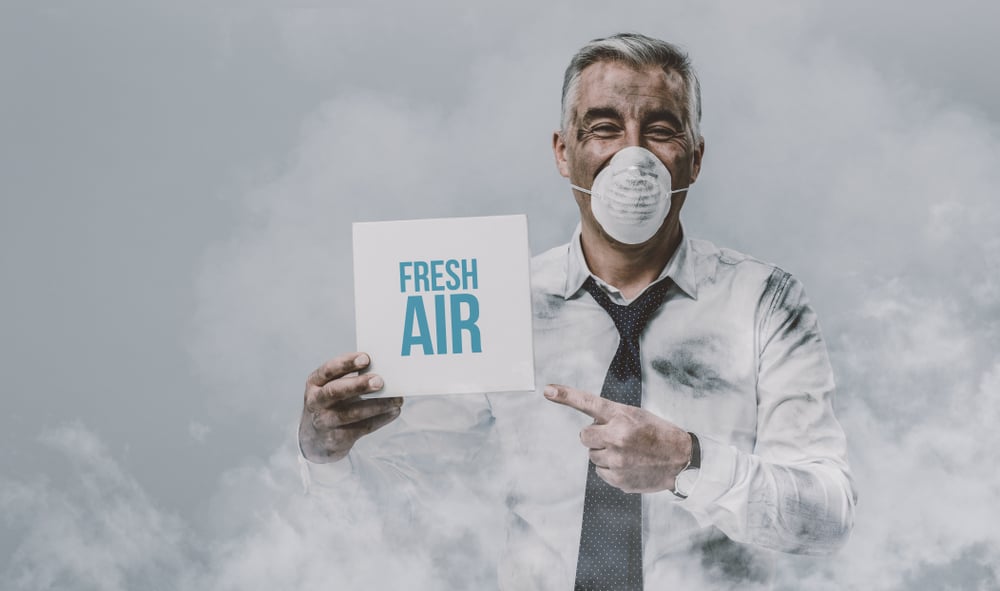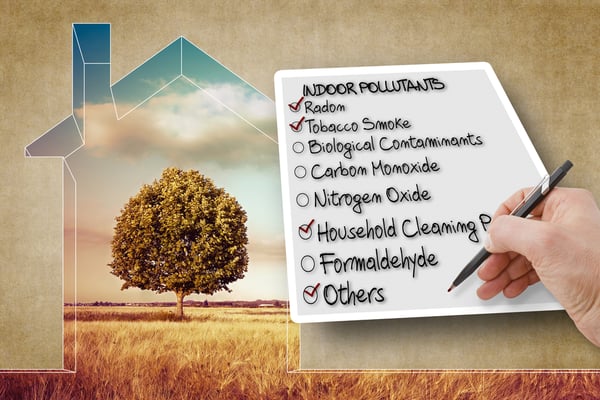Improving Indoor Air Quality to Make Buildings Healthier

In recent decades, many building owners have become more interested in saving energy, conserving water, and reducing their environmental footprint in general. However, designing buildings that are healthy for occupants is also important, and this has been emphasized by the coronavirus outbreak. We spend 90% of our time indoors, according to the US Environmental Protection Agency, and indoor air is typically 2 to 5 times more polluted than outdoor air.
Viruses are just one of many airborne threats that affect humans. Other hazards of biological origin include bacteria, mold spores, dust mites, and pollen. Negative health effects have also been identified for substances like volatile organic compounds (VOC), particulate matter (PM), and nitrogen oxides (NOx). Carbon monoxide is especially dangerous since a concentration of only 1% in the air causes loss of consciousness within minutes, and possibly death.
Improve indoor air quality, and make your building healthier and more productive.
Every building design is unique, but there are three main strategies to improve air quality:
- Eliminating the sources of indoor air pollution, or minimizing them if complete removal is not possible.
- Using natural and mechanical ventilation to constantly replace stale air with fresh outdoor air. This reduces air pollution levels through dilution and extraction.
- Purifying indoor air directly with methods that capture or destroy pollutants. These include filtering, chemical purification, and ultraviolet purification.
The most cost-effective approach is minimizing air pollution sources first, and then optimizing ventilation and air purification. The removal of air pollution sources brings a passive benefit, while the other two methods have an ongoing energy cost.
Eliminating Air Pollution Sources in Buildings
Current efforts to improve air quality are focusing on coronavirus prevention. However, many other airborne hazards often get ignored. For example, volatile organic compounds are off-gassed by many construction materials and furniture, especially when new.
Indoor air quality starts with selecting the right construction materials during the design phase. Many common construction materials are now available in low VOC versions. If you are planning to get the LEED certification for your next building project, these low-emitting materials can help you score points.

All equipment and appliances that use combustion must have adequate venting since combustion releases many harmful substances. Carbon monoxide is especially dangerous, being highly poisonous to humans.
Air humidity is not a pollutant, but air quality is negatively affected when humidity is not controlled. Harmful organisms like mold, dust mites, and bacteria thrive with high moisture levels. On the other hand, viruses and other harmful particles stay airborne for longer with low humidity. For these reasons, the US EPA and ASHRAE recommend a relative humidity of 30% to 60%.
- The scientific community is still analyzing and debating the effect of humidity on the new coronavirus.
- However, many viruses become less infectious at relative humidity values close to 50%. This behavior has not been studied yet in SARS-CoV-2, but there is evidence that other coronaviruses become less infectious with moderate humidity.
Regardless of how air moisture affects the new coronavirus, the air quality benefits of keeping a moderate RH have been widely studied.
Improving Air Quality with Smarter Ventilation
Building ventilation systems are normally designed with prescriptive airflow values from ASHRAE standards. These values have been determined experimentally by ASHRAE, based on the type of building, floor area, and number of occupants. However, this is an indirect design approach, since ventilation systems don’t respond directly to air pollution levels.

The following design features can make ventilation systems smarter, and more capable of controlling indoor air quality:
- Using air pollution sensors to constantly monitor air quality.
- Analyzing air pollution measurements with a smart control system.
- Ramping up the ventilation rate when an increase in pollution levels is detected.
- ASHRAE approves this method, and design guidelines are provided in Standard 62.1.
Many building codes have established the prescriptive airflow values from ASHRAE as minimum requirements. When using smart ventilation controls, they must be configured to never reduce airflow below the values required by codes.
To deal with airborne pathogens, the combination of filtering and ultraviolet radiation is an effective addition to ventilation systems:
- High-efficiency particulate Air (HEPA) filters capture 99.97% of particles with a diameter of 0.3 microns.
- Filtering can be combined with Ultraviolet Germicidal Irradiation (UVGI), which destroys the DNA and RNA of viruses and bacteria.
Indoor air quality improvements can help control respiratory illnesses in building interiors. However, keep in mind that IAQ measures are not a substitute for the guidelines from health authorities, such as social distancing and frequent handwashing.

Michael Tobias
Michael Tobias, the Founding Principal of NY Engineers, currently leads a team of 50+ MEP/FP engineers and has led over 1,000 projects in the US
Join 15,000+ Fellow Architects and Contractors
Get expert engineering tips straight to your inbox. Subscribe to the NY Engineers Blog below.



